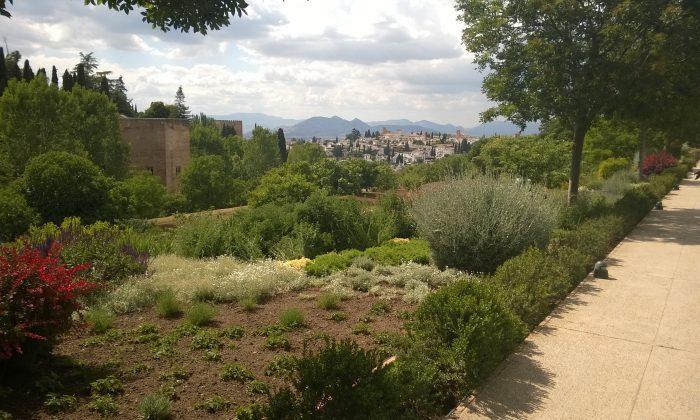If you ever visit Spain you must see Alhambra, the palace and fortress complex located in the city of Granada in the south of the country.
Described by poets in the 14th century as “a pearl set in emeralds,” Alhambra was the perfect hideaway for Granada’s Nasrid dynasty sultans. Surrounded by the ever white peaks of the Sierra Nevada mountains, it was filled with incredibly beautiful rose gardens, water fountains, pools, and shaded alleys.
Today, Alhambra is Spain’s most prominent tourist destination, averaging three million visitors per year—a definite highlight for Granada. This results in crowded downtown streets booming with life and entertainment, all within the backdrop of the city’s rich history of traditions based on a fusion of Muslim, Jewish, and Spanish cultures.
The palace itself is one of the finest examples of Muslim architecture. First built in the 9th century as a small citadel, it was expanded into a fortress capable of withstanding army attacks in the 11th century. But it was not until the 14th century that Alhambra was developed into a stunning palace by the Nasrid dynasty sultanate, becoming the pompous capital of the Granada Kingdom.
In the 15th century, Alhambra was invaded by the Christian armies of Spanish King Ferdinand of Aragon and Queen Isabella of Castile. During the Christian rule, Alhambra was expanded to include Renaissance-style architecture.
The palace is now surrounded by dense woods mainly comprised of English elms, brought there by the Duke of Wellington in 1812. All of this lush growth is possible due to the intelligent irrigation system, made of interconnected streams, cascades, pools, and fountains.
At the beginning of the 19th century, after the French invasion, the Spanish kings lost interest in Alhambra, which was partly destroyed by the French army and was left in ruins, open to pillaging and vandalism. It was not until the late 19th century that the abandoned palace began to draw attention again and was finally reconstructed and used as a museum for tourists.
Tips for Visitors
Due to the enormous popularity of the palace, it’s a good idea for visitors to arrive early and book tickets right away. For example, I arrived at Alhambra at around 1 p.m., but couldn’t get into the palace itself until 6 p.m. However, the good thing is that during the waiting time, visitors can freely walk through the gardens and enjoy their beauty.
Another tip is to take the sightseeing train from Alhambra to Granada. It’s a great way to get an overview of the old town centre and get a taste of its history. The train stops every few kilometres, and visitors can get off and enjoy the city, then catch the next train a while later. The trains come about every 30 minutes on schedule. Note that one ticket is valid to ride all sightseeing trains the whole day.
The best time to visit Alhambra is during spring and fall; it’s advisable to avoid the summer months of July and August due to extremely hot temperatures. Those wanting to go skiing should visit during winter and avail of the Sierra Nevada Ski Station, where the 1996 Alpine World Ski Championship was held.





Friends Read Free